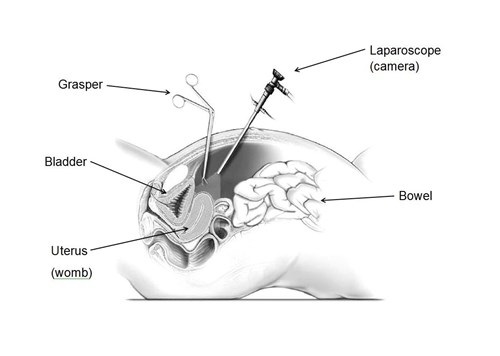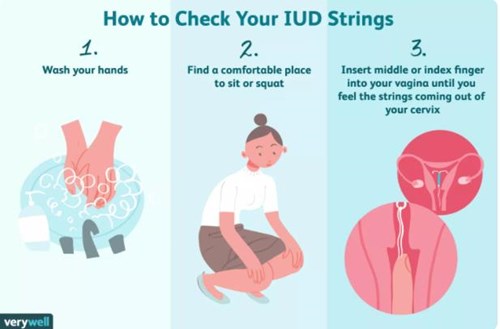The leaflet is detailed below, or you can download the 'Support and Guidance Following Your Loss' leaflet in PDF.
We wish to offer you our sincere condolences at this sad time.
We understand that the death of a loved one or friend can be devastating and may cause strong and sometimes confusing emotions.
We hope that you will find this booklet helpful for all the practical arrangements that need to be made and provide you with information on who can help and offer support through this difficult time.
What to Do First?
When Can I See My Loved One Or Friend?
- When a death has occurred on the ward, you will be given the opportunity to stay with your loved one within the Mulberry or Orchid Suite on the ward before they are transferred to either the chapel of rest at your chosen funeral directors or the facilities at The Royal Liverpool University Hospital, as these facilities are not available at The Liverpool Women’s Hospital.
- Should you or a member of the family or close friend wish to see your loved one or friend you can arrange an appointment at:
Royal Liverpool University Hospital,
Bereavement office
9:00am - 12:00pm and 1:00pm - 3:30pm, Monday to Friday.
Please contact 0151-706-3805
Outside normal working hours please telephone the hospital switchboard on: 0151 706 2000 and ask to speak to the Duty Manager
Memories
Many people find themselves thinking about the future and grieving about a time when they or their loved one may no longer be there. This can be particularly difficult if there are children in the family. It’s often upsetting to think that as time goes by, they could forget how much you loved and cared for them.
The suggestions here can be adapted and facilitated at the hospital to help you create a memory for any loved one:
- Memory boxes
- Jewellery boxes
- Hand/foot moulds
- Memory book- hospital book of condolences
- Comfort packs
- Prayer tree next to the multi-faith prayer room
Registering the Death
When somebody dies, you normally need to register their death within five working days. The death has to be registered at a register office.
It can be quicker to go to the register office in the area where the person you cared for died. If you go to a register office in another area it may take longer to get the documents needed and slow down the funeral arrangements.
Before a death can be registered, a hospital doctor will need to issue a medical certificate giving the cause of death which must be taken with you to the register office. If the death has been referred to the coroner you will be advised by them when an appointment should be made to register.
The death can be registered at:
Liverpool Register Office,
St Georges Hall (heritage entrance)
St Georges Place
Liverpool, L1 1JJ
Telephone: 0151-233-3004 to make an appointment or book online at www.liverpool.gov.uk
Who Can Register The Death?
In most cases a death is registered by a relative. If the person you cared for doesn't have any family who can register their death, the registrar will allow other people to do this. As long as the person died at home or in a nursing home or hospital, their death can be registered by a relative, someone who was present when they died, someone who lived in the same house, an official from the hospital, or the person who is arranging the funeral with the funeral directors
What Documents Do I Need To Register A Death?
- The medical certificate, showing the cause of death and signed by a doctor
- The following are not essential, but if you can find them, you should also take the person’s:
- Birth certificate
- Marriage or civil partnership certificate
- Their NHS medical card
What Other Information Will The Registrar Need?
- The registrar will require the following information from you:
- The date and place of death
- The full name and surname (and maiden name if the deceased was a woman who married)
- The date and place of birth (town and county if born in the UK and country if born abroad)
- The occupation (if the deceased was a married women or a widow, the name and occupation of their husband)
- The usual address details of any state pension or other state benefit they were receiving
Death Certificates
- Once the death has been registered, the registrar will give you two important documents.
- One is a Certificate for Burial and Cremation (green form). This gives permission for the person’s body to be buried or for an application for cremation to be made. Give this to the funeral director.
- Two, is a Certificate of Registration of Death (form BD8). This is for use in social security matters; for instance, dealing with the deceased person's state pension or other benefits and claims.
- You can buy extra copies of the death certificate when you register a death. You will need these if you are dealing with the persons affairs or to give to the executor or administrator who is dealing with affairs such as the persons will. The registrar will give you a booklet called ‘what to do after a death’ from the Department of Work & Pensions, that contains advice on several subjects, including paying for the funeral, probate and property, and other practical advice including what to do if the person you cared for died abroad, or in Scotland or Northern Ireland. For more information see UK: what to do after someone dies.
Coroners and Post Mortem Examination
Coroner
In certain situations a death may have to be reported to the Coroner. You will be advised if this has to happen. This generally occurs when a doctor is unable to issue a medical certificate of cause of death due to any of the following:
- No precise cause can be established
- The deceased has had an operation within previous 12 months
- Unnatural causes
- An injury or a fall
- Due to an accident or allegations of negligence
- The death occurs within 24 hours of admission to hospital
- The death occurs within 30 days of radiotherapy or chemotherapy treatment
- The death occurs in custody
Coroner’s Post Mortem
The Coroner may order a post mortem examination to determine the exact cause of death, if the Coroner orders a post mortem examination, then it becomes a legal obligation; therefore permission from relatives or next of kin is not required.
Once the results of the examination are known, if an inquest is not required, a certificate to register the cause of death will be issued by the Coroner’s Office.
Hospital Post Mortem
Hospital post mortems are not needed by law but are requested by doctors or the next-of-kin when they need more information regarding the death. This can help families and doctors understand the cause of death and may help others with a similar illness in the future. The doctors have to ask your permission to perform a hospital post mortem and you will be asked to sign a consent form.
The Funeral Director
Your chosen funeral director will advise you on all matters concerning the funeral and will help you to make decisions regarding anything which you are unsure of.
Funeral arrangements can be made at any time, although the date when a funeral can be held may be affected if the Coroner is involved.
The chosen funeral director will need the registration form (green form) which is issued by the registrar, to arrange either burial or cremation.
Advice on Finance
If you receive income support, family credit and/or housing benefit, you may be entitled to help with funeral costs. To apply or ask for information, contact your local Department for Work and Pensions, 0845 606 0265 http://www.dwp.gov.uk/docs/dwp1027.pdf
Where relatives are seeking help with the financial costs of the funeral they should first contact the Department for Work and Pensions for confirmation before registering the death.
Who to Inform?
When someone dies, informing the official organisations such as local government agencies and departments can be a repetitive and difficult process.
‘Tell us once’ is a service that lets you report a death to most government organisations in one go unfortunately this service is not available in the Liverpool area.
However, please ask at your local register office if this service is available.
Please use the following as guidance to who to inform:
- GP
- Electric/gas
- Any hospital
- Council Tax
- Inland Revenue
- Social services (home care)
- Department of Working pensions
- Passport office
- Place of work
- DVLA
- Solicitor
- Royal Mail
- Bank
- Housing (landlord)
- Insurance company
- Library
- Motor insurance
- Careline
Bereavement Support
- Members of the Hospital Chaplaincy Team visit the hospital on a regular basis, offering aspects of pastoral care as required. Should you wish to meet one of the team, contact can be made via the hospital switchboard 24 hours 7 days per week.
- There is also open access to our multi faith room located on the ground floor near the main reception
- If known to the Macmillan team, they will send you a bereavement card after the death of your loved one and a bereavement survey three months after the death of your loved one.
- The Hospital Macmillan Team are also available for ongoing bereavement support and can be contacted via the hospital switchboard Mon-Fri 08.00-4.00 or 0151-702-4186 (answerphone)
Useful Organisations
Age UK
National advice line: 0800 055 6112
Alder centre at Alder hey Hospital (following death of a child)
01512525391
9am-5pm Mon to Thurs and 9-4.30 Fri
Bereavement support (NHS choices)
www.nhs.uklivewell/bereavement/pages/bereavement
Carers UK
Helpline: 08088087777
Gingerbread (single parent helpline)
Tel: 01616367540
Compassionate friends (support for bereaved parents and their families)
Helpline: 03451232304
Cruse bereavement care (for children, young person and adult support)
National helpline: 08088081677
Department for Work and Pensions
Tel: 0845 6060 265
Samaritans
National Helpline: 08457 90 90 90
Macmillan cancer support
National helpline: 0808 808 00 00
Mon-fri 09.00-20.00
Marie curie-(bereavement service)
08000902309
Organ donation
National helpline: 0300 123 23 23
Winston’s Wish (supporting bereaved children and young people)
National Helpline: 08088 020 021



